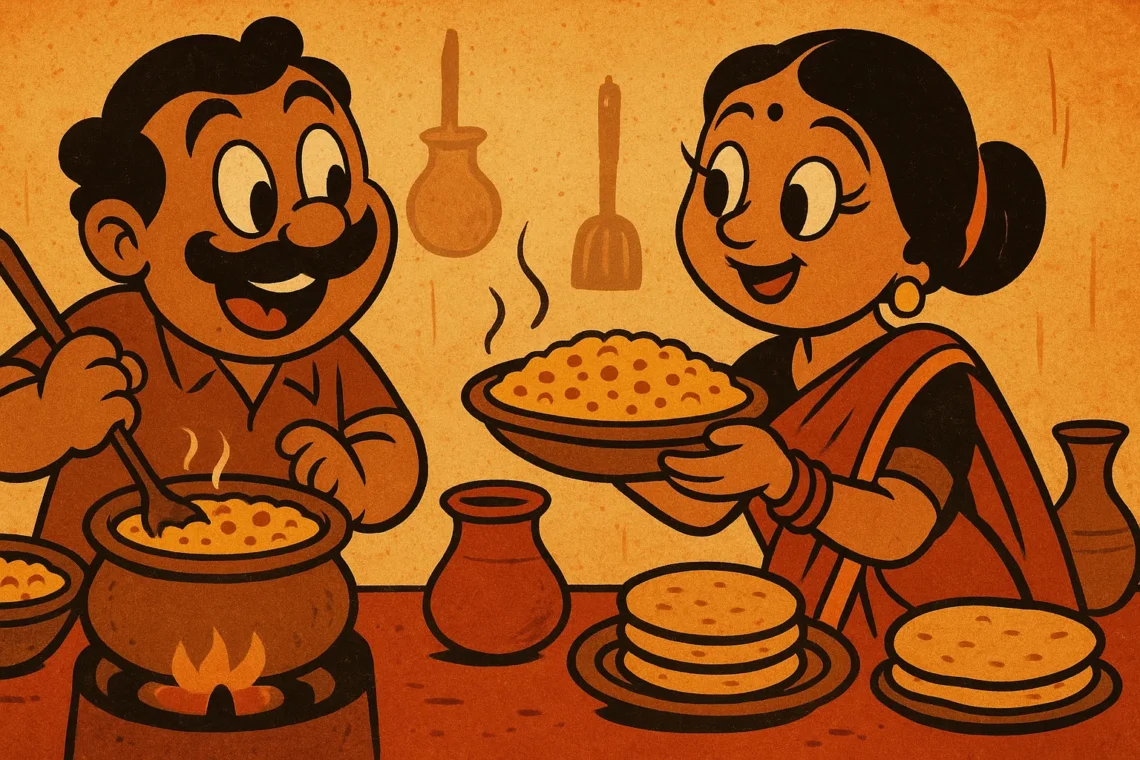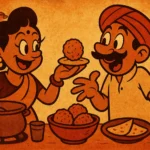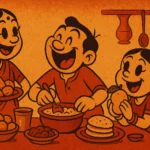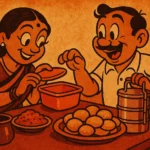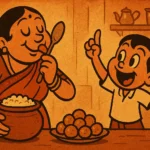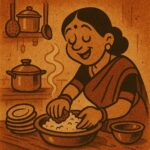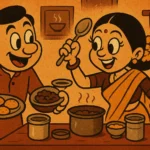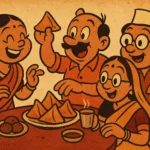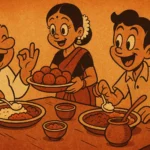It’s been sitting in the fridge for two days. Maybe three. In a steel bowl with a glass lid that fogs up every time you open the door. It’s thickened, darkened, maybe even separated slightly. No one’s asked about it, no one’s eaten it, and yet there it is—faithfully taking up space. You consider tossing it. You even pick it up, walk to the sink. And then you stop. Because something in you whispers, “No. Not this dal.”
There’s always one dish that refuses to be discarded. Not because it’s exceptional or rare. Quite the opposite. It’s ordinary. It’s comfort. It’s dal. And this dal—simple, yellow, maybe a little overcooked—is the one you just can’t bring yourself to throw away.
More Than a Meal
Dal isn’t just food in most Indian homes. It’s a baseline. A constant. The first thing you eat when you’re sick. The softest thing you serve to kids. The easiest thing to digest when everything else feels heavy. It’s never the star, but it’s always on the plate. And that makes it quietly powerful. It’s the dish that absorbs moods, stretches to feed whoever shows up, and carries the weight of what was left unsaid at the table.
This particular dal—now cold, thickened, and a little lonely—was probably made on a weeknight. Maybe with jeera and ginger, maybe with onions and tomatoes. It was served with rice or rotis, praised politely, then packed away with the intent of finishing it tomorrow. But tomorrow came with other plans: a friend dropped by, there was leftover Chinese, someone made pasta. The dal waited. Without complaint.
Too Familiar to Forget
You open the fridge again. See it, remember it. Feel a pang. It’s not that you’re craving it. You just can’t bring yourself to treat it like waste. This dal was made with care. It fed someone. Maybe you. Maybe your child. Maybe someone you love who took a second helping without saying much. It’s soaked up all of that. And now you feel like you owe it something.
So you reheat it. You add a splash of water. Maybe re-temper it with ghee, some garlic, a few curry leaves. It bubbles again, smells warm again. It forgives you instantly. Doesn’t complain that it was ignored. Doesn’t protest that it’s the third time you’re reheating. This dal? It’s loyal.
Waste Feels Personal
There are a hundred reasons we’re taught not to waste food. Religious, cultural, environmental, economical. But with dal, it feels more intimate. You don’t waste dal because it feels like throwing away a part of the everyday—the reliable, the nourishing, the quietly good. It feels like saying no to the kind of love that doesn’t ask to be noticed.
In my home, the dal is always the last dish to finish. We save it. Fold it into rotis. Mix it with rice and leftover sabzi. Turn it into soup. Feed it to the sick, the tired, the disinterested. And when all else fails, we eat it ourselves, standing in the kitchen with a spoon, straight from the pot. Because no one else will finish it the way we can. Because it’s earned that dignity.
The Dish That Holds Us
Some foods are made for occasions. Others are made for days when you don’t know what to feel. Dal belongs to the latter. It doesn’t perform. It just shows up. Again and again. So when you see it sitting there, quietly existing in the back of the fridge, untouched but undeniable, you pause. You remember. You reheat. You eat.
Because that dal you can’t throw away? It’s not just food. It’s history, comfort, and a little bit of yourself—softened, seasoned, and still somehow warm.
Born in Mumbai, now stir-frying feelings in Texas. Writes about food, memory, and the messy magic in between — mostly to stay hungry, sometimes just to stay sane.

